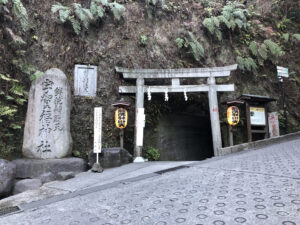Kabukiza in Ginza
For the history details about Kabuki, as well as for a better understanding of what it is like to watch Kabuki, check out Kabuki in Kabukiza Theater. Kabukiza Theater is an excellent venue to get an introduction to the traditional Japanese performing arts. The Kabukiza Theatre is a premier theatre in Tokyo to see Kabuki, the traditional form of Japanese theatre.
The Kabukiza Theatre, located in Ginza, opened in 1889, is Japan’s largest kabuki theatre, and is the only theater dedicated entirely to the tradition of Kabuki. It also features a permanent interactive exhibit in which you can learn about kabuki. The Kabukiza Theatre is also accessible by walking for five minutes from Ginza station (Ginza/Marunouchi/Hibiya line).
Kabukiza Theater in Japan
The famed Kabuki-za Theatre is located in Tokyo’s luxurious Ginza district. The premier Kabuki theater in Tokyo is Kabukiza Theatre, located in Ginza. Kabukiza Theater, located in Ginza, is a Kabuki idol, featuring frequent performances, which changes their schedule on a monthly basis.
It is safe to say the Kabukiza Theatre in Ginza is the most important building in the world of kabuki. One of the best known Kabuki theatres, Minamiza, is located logically in Kyoto City.
The Shochikuza Theatre in Osaka often schedules a few runs of Kabuki shows per year as well. There are a number of historic Kabuki theatres in Japan that no longer hold events, but are still open to the public as examples of traditional performance spaces. This vibrant location hosts traditional dance and drama performances every month for an entire year.
The Kabuki-za Theater in Tokyo is the venue for Japan’s traditional art form of dance-drama known as Kabuki, easily recognized by its heavy makeup, expressive expressions, exquisite costumes, and stage techniques that catch audiences off guard. Tokyo’s Kabuki-za Theater is very identifiable with its traditional Japanese architecture, surrounded by high-rise buildings, and is connected with Higashi-Ginza subway station, which is either on the Hibiya line or Asakusa line.
Kabuki is Japan’s Traditional Comedy.
Kabuki is Japans only form of theatrical theatre, one of the arts that is still practiced to this day. Several characteristics distinguish Kabuki from other Japanese performing arts. Kabuki is marked by the Kabuki-specific costumes, makeup, different performances, complex staging techniques, and the fact that it is performed only by men..
Kabuki is a type of dance-drama known for its stylized makeup, elaborate scenic designs, lavish costumes, and the inclusion of traditional Japanese instruments such as the koto and the Shamisen. In simple terms, kabuki is a form of dance-drama where actors wear elaborate costumes and full-face makeup (known as kumadori) and perform stylized, exaggerated movements. We recommend it for advanced kabuki observers with a background in this traditional performance art.
This comprehensive guide will help you to learn about the cultural significance and importance of the traditional dance-drama, where to watch a performance, what to expect from a show, and how to book tickets. To get more information on kabuki, or about our guided tours to Tokyo or other parts of Japan, visit our site.
If you would like to experience live kabuki performances when in Japan, here’s where you can go. When visiting Japan, you will want to experience the pleasure of watching Kabuki, visit the Kabukiza Theatre in Tokyo.
Kabukiza gallery is an interesting way to pass your 20 minutes, especially if you cannot watch live performances (the museum shows videos of kabuki). If you want to see kabuki performances when in Tokyo, they are actually quite easy to do, especially if you are okay with only seeing a single performance. If you want to get a seat close to the action, or if you would like to purchase tickets ahead of time to see a Kabukiza Theater performance, that is pretty easy too.
You will need to stand in line at the Single Act Box Office, located to the left of the main entrance at ground level at the Kabukiza Theatre in Tokyo.
Kabukiza Theatre is located right next to Exit 3 at Higashi Ginza (Hibiya/Asakusa Lines) Higashi Ginza (Hibiya/Asakusa Lines), although exit A1 might be necessary depending on what direction of trains you are going. The complex includes Kabukiza Theatre, Kabuki Gallery, shops, and restaurants. Like all kabuki theatres, its stage includes a spinning circle at the centre, a platform which can be dropped beneath floor level to allow actors to appear and disappear magically for dramatic effect, and a catwalk which extends out to the audience.
Kabuki draws large crowds of people from Japan, but is growing in popularity with international visitors as well. A Kabuki performance is like watching a scene of an alien in another galaxy.
Fans of the Japanese modern art and classic drama, Kabuki, will now enjoy the stunning curtain design of the kabuki theater in Tokyo’s Kabukiza Theater, located at Ginza, through Nov. 28. In 1889, a real theatre, the Second Kabuki-za, was built — Japan’s largest theatre at the time — with a stage almost 80 feet wide, with a 54-foot-wide, rolling proscenium. After being banished in the 17th century to the interior of the country by prudish Tokugawa rulers, Kabuki made a formal return to the capital in the late 19th century, with the establishment of a Kabuki-za [theatre] in the 1889 Kobikicho area in Tokyo’s Ginza District.
Not only are these 3 plays among the best-loved works in Kabuki, it is easy to find the play summary online beforehand, so that you can enjoy the story in full as you attend the performance.
Way to Access Kabukiza
Train
JR Line/Shinkansen
Tokyo Station 10 minutes walk
Subway
Tokyo Metro Hibiya Line
Higashi Ginza Station No.3 Exit
Tokyo Metro Ginza/Hibiya/Marunouchi Line
Ginza Station No.7 Exit 5 minutes walk
Car
Ginza Kabukiza Parking
AM8:00~PM10:00 30minutes/300yen
PM10:00~AM8:00 60minutes/100yen
Maximum Fee 1700yen.
Matutake Square Parking
30mintues/330yen









